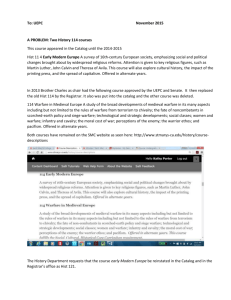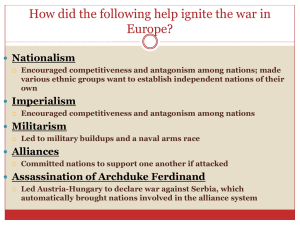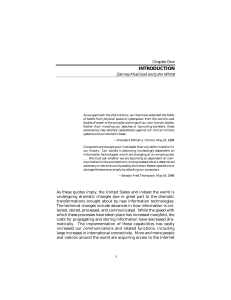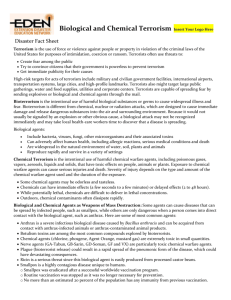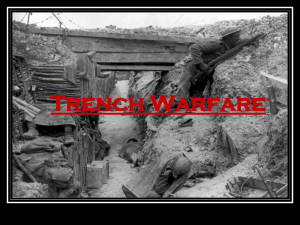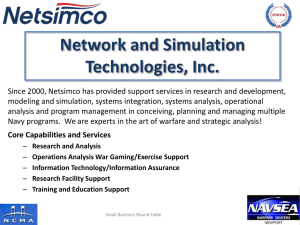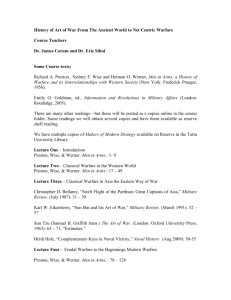Chapter 2
advertisement
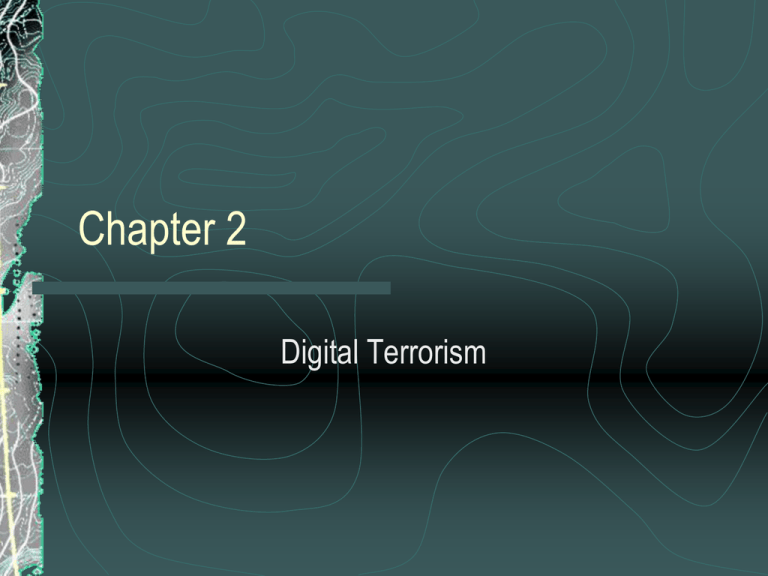
Chapter 2 Digital Terrorism Buzzwords: Information Warfare and Cyberterrorism Information warfare is the gathering or use of information to gain an advantage over another party. Those actions intended to protect, exploit, corrupt, deny or destroy information or information resources in order to achieve a significant advantage, objective or victory over an adversary. Components of Information Warfare Information warfare consists of six components: Psychological operations Electronic warfare Military deception Physical destruction Security measures Information attacks Electronic warfare is the denial of information or accurate information to an adversary. Physical Information Warfare Physical information warfare involves a physical attack on an information system Terrorism is the actual or threatened use of violence by an individual or group motivated by ideological or political objectives. The goal of terrorism is to intimidate or coerce a government or its people. Cyberterrorism cannot be as concretely defined. Cyberterrorism Terrorism is defined by the nature of the act, not by the identity of the perpetrators or the nature of their cause. Cyberterrorism is specifically a premeditated, politically or ideologically motivated attack or threat of attack against information, computer systems, computer programs, and data that can result in violence against civilian targets. There are four categories of attacks: Infrastructure attacks Attacks designed to destroy a system that includes critical data Information attacks Attacks focused on demolishing or altering the content of electronic files or computer systems Technological facilitation Use of cyber communication to distribute and coordinate plans for a terrorist attack, incite an attack or assist in the facilitation of terrorism Promotion Fundraising, solicitation and recruitment Information infrastructure is composed of five essential components: Communications networks Phones, satellites and cable networks Equipment used for the provision of information TV's, radios, computers and phones Information resources Educational or medical programs or databases Applications Electronic commerce or digital libraries People Facilitation of Attack Technology has allowed for reduced transmission time in communication, so that members of an organization all over the globe may coordinate their tasks. Information technology has also reduced the cost of communication. Data Hiding Data Hiding means that the information is hidden or imbedded in other apparently innocent data. Post September 11, 2001, reports surfaced that revealed that al Qaeda had been transmitting hidden data over the internet. Data Hiding - Cryptography An encryption program scrambles information in a controlled manner through the use of a cryptographic key. Ramzi Yousef, convicted of the 1993 World Trade Center bombing, had encrypted plans to destroy 11 American airliners. This was only discovered after FBI agents spent over a year decoding files found in Yousef’s Manila apartment in 1995. Propaganda and Promotion Terrorist organizations and adversarial nations have also used the internet for purposes of propaganda and recruitment. www.palestine-info.net/hamas/ www.hizbollah.org Examples from Al-Qaeda Sheikh Omar Bakri Muhammad, an Islamic cleric with proven ties to bin Laden, posted information to the internet that al Qaeda was actively planning a “cyber jihad,” or holy war, against the United States and its allies. China and Information Warfare Cyber warfare has been almost totally incorporated into the military lexicon, Military and academic training, and Political organization in China.

